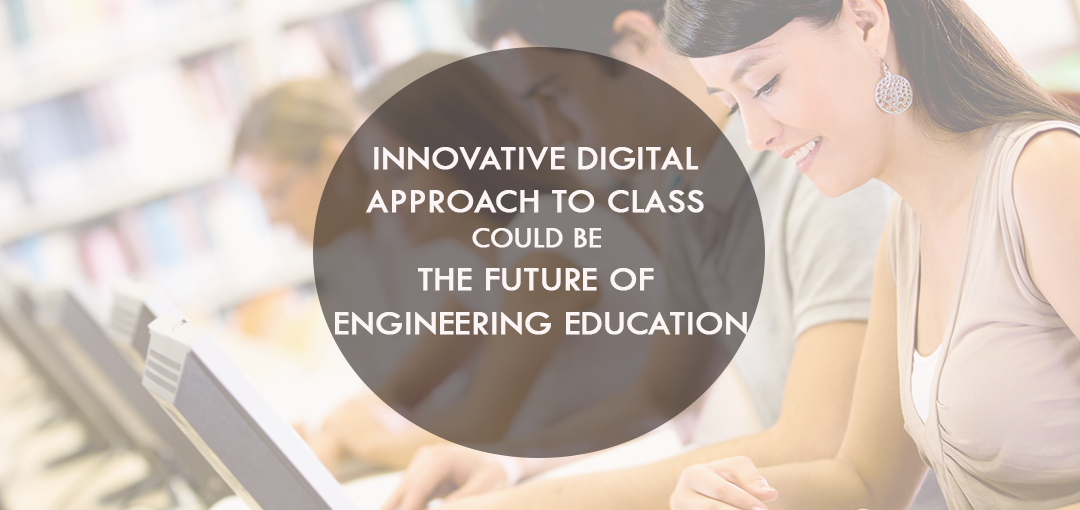Engineering education is evolving rapidly with the integration of digital tools and modern teaching methods. Today, traditional lecture-based learning is being replaced by interactive, technology-driven approaches that improve student engagement and performance. This blog explores how an innovative digital approach in engineering education is shaping the future of learning, highlighting case studies, outcomes, and opportunities for aspiring engineers.
Why Digital Transformation Matters in Engineering Education?
Engineering students are natural innovators, always seeking improvements in processes and systems. The same principle applies to education. By integrating digital classrooms, e-learning platforms, and online resources, institutions can:
- Improve student understanding through visual learning tools
- Increase access to engineering courses online anytime, anywhere
- Enable personalized learning experiences for better outcomes
Case Study: Cal Poly Pomona’s Digital Engineering Classroom
Professor Paul Nissenson from Cal Poly Pomona led a pioneering project to replace traditional lectures with a digital-first teaching approach in a mechanical engineering course.
Key features included:
- Over 60 interactive engineering video lessons
- An online homework platform for self-paced learning
- Integration of McGraw Hill’s Connect platform for interactive textbooks
Impressive Outcomes of Digital Learning:
The results were remarkable:
- Traditional lecture passing rate: 60–70%
- Digital approach passing rate: 83–94%
This proves that a blended learning model in engineering education can significantly enhance student success.
Collaboration and Teamwork in Digital Education
The project expanded to include:
- 7 professors from engineering and social sciences
- Team-based problem-solving sessions in classrooms
- Gamified learning techniques like team battles to boost engagement
Features That Make Digital Engineering Classes Successful
- Video-based quizzes to ensure students watch and understand lessons
- Problem-solving sessions during class time
- Interactive digital textbooks to make concepts easier
- Stress-free learning environment with structured guidance
Student Feedback: A Positive Shift
Students reported that while the course material wasn’t necessarily easier, the digital format made learning more effective and less stressful. The mix of videos, quizzes, and teamwork created an engaging and supportive classroom environment.
How Digital Learning Shapes the Future of Engineering?
The future of engineering education lies in:
- Digital-first teaching methods
- AI-driven personalized learning paths
- Wider adoption of online engineering certification courses like ANSYS, AutoCAD, and BIM
- Preparing students for industry 4.0 and smart manufacturing
Conclusion:
The success of digital approaches in engineering classrooms highlights a shift toward innovative, student-focused learning. By adopting interactive methods, online resources, and digital platforms, engineering institutions can significantly improve student success rates and better prepare future engineers for global challenges.
To advance your skills and explore engineering certification courses, consider enrolling in programs like ANSYS certification, AutoCAD courses, and BIM training at CADD Centre.
FAQs:
Why is digital transformation important in engineering education?
Digital transformation in engineering education improves student engagement, provides access to online engineering courses, and enables personalized learning with interactive tools, making it more effective than traditional classrooms
How does digital learning improve engineering student performance?
Digital learning in engineering has proven to boost success rates. For example, students in digital engineering classes achieved 83–94% passing rates compared to 60–70% in traditional lecture-based learning.
What are the key benefits of digital classrooms for engineering students?
The benefits include:
- A stress-free and engaging environment
- Access to online engineering certification courses anytime, anywhere
- Interactive video-based lessons and quizzes
- Digital textbooks for visual learning
- Team-based problem-solving and gamified learning techniques
Which engineering certification courses are most valuable?
The most in-demand certifications include:
- ANSYS Certification for engineering simulation and analysis
- AutoCAD Training for drafting and design
- BIM Training for building information modeling
Where can I enroll in engineering certification courses?
You can join industry-recognized programs at CADD Centre, which provides globally trusted training in AutoCAD courses, BIM certification, and ANSYS training to boost your career in engineering.





